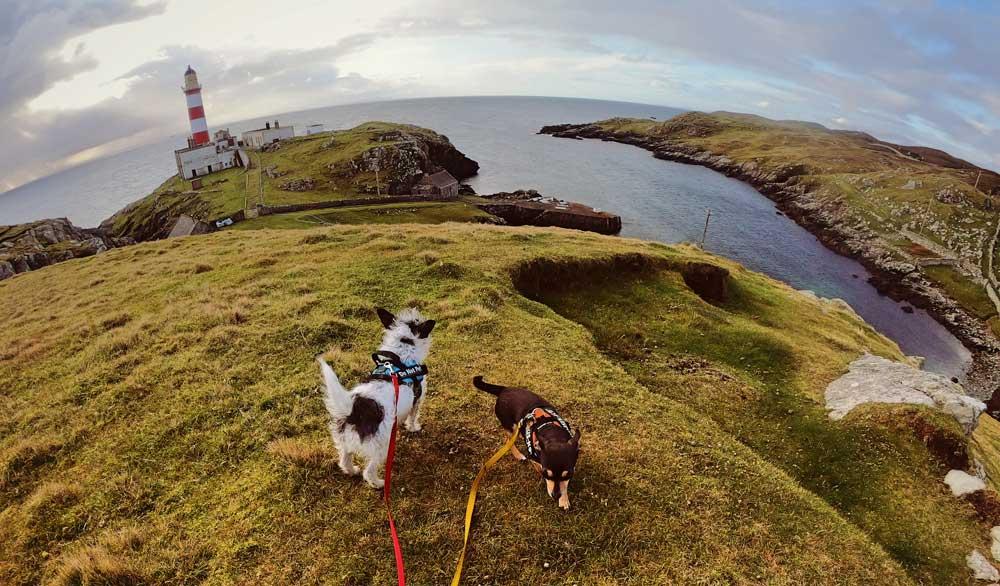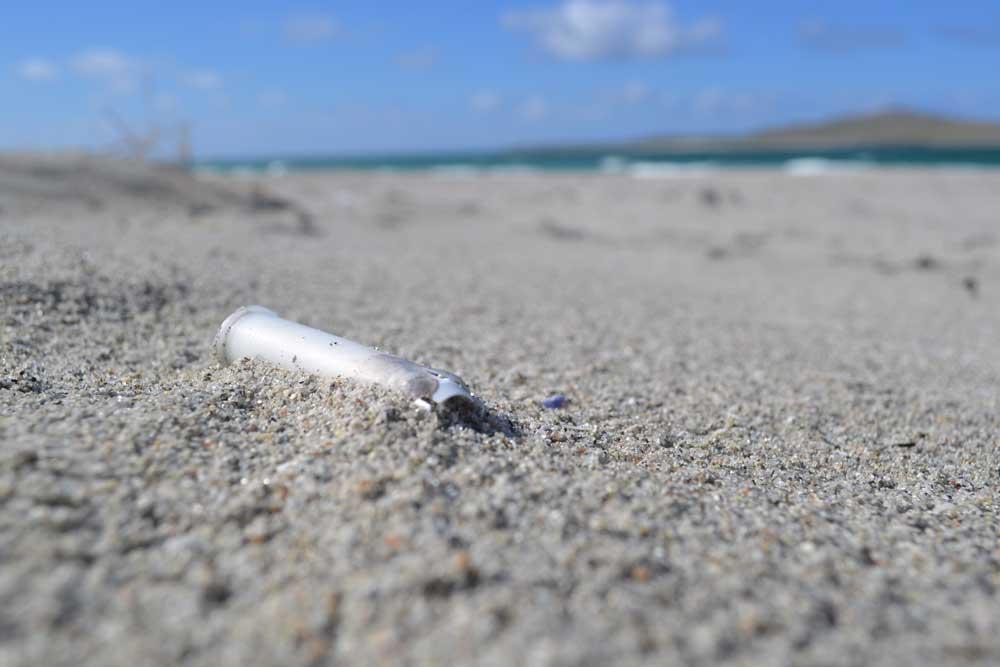Visiting Skye responsibly: protecting the delicate environment
The Isle of Skye is a magical place, home to a vibrant community and a diverse range of wildlife. But the ecosystems is vulnerable to disruption or damage, so here’s how visitors can visit Skye responsibly and follow the ‘leave no trace’ ethos.
From dramatic hills to fairy-tale glens, it’s an outdoor-lovers paradise with countless beautiful spaces to explore.
Skye often feels wild, windswept and wide. Yet it’s far from empty. It is home to a community of vibrant and varied people, thousands of farm animals and, of course, a diverse range of wildlife.
Despite being ancient and rugged, these landscapes are workplaces and ecosystems that can be vulnerable to disruption or damage.
Because of this it’s a good idea for visitors to know how to visit Skye responsibly and follow the ‘leave no trace’ ethos. It’s something that’s important to all of us living here, plus it means that the island remains special for your return (because one trip here is never enough!)
So here is a rough guide with tips on how to visit responsibly. These are from someone who has lived on Skye for nearly a decade but they can also apply to many other rural areas around the Highlands and Islands.
Shop and eat locally
This is one of the most fun ways to support the community that you’re visiting.
Shopping and eating/drinking locally is a way of investing in these small independent businesses and keeps them running. It’s also the best way to experience some of the incredible produce, crafts and products that are made on the island.
Single track driving and parking

Driving around Skye can be intimidating; there are single track roads, hairpin bends, rumbling tractors and sheep wandering everywhere. Then there’s the stunning views to distract you at every turn!
- -Familiarise yourself with the rules of driving on a single track road before you arrive. There are numerous guides online such as this one by Finding The Universe.
- Allow cars behind you to overtake.
If you’re feeling nervous whilst driving or if your passenger wants to take a photo it’s sensible to slow down but please be aware of other road users behind you. They might be on their way to pick the kids up from school, get to a medical appointment or catch a ferry. If you’re on a single track road pull over and let them pass, they will be incredibly grateful! - Never park in a passing place or in front of a gate.
It might seem like there’s no-one around but croft gates are often in constant use and it doesn’t take long for a traffic jam to build up when a passing place is blocked. - You’ll often come across animals in the road.
Slow down and let them cross. If they don’t move or are lying down, approach very, very slowly and they will get up and out of the way.
Sometimes the whole road will be jammed by crofters herding a flock of sheep or herd of cows. When this happens give them plenty of space, pay attention to any gestures or shouts from the crofter and relax. You can’t go anywhere in this situation so take the opportunity to get some good pictures (I usually post them with the caption ‘Traffic: Skye-style’!)
Leave no trace

Of course, most of us wouldn’t dream of dropping litter but there are other things that leave a trace that you might not have thought of…
- Discarded loo paper is a regular sight at popular attractions and along paths. Unfortunately it doesn’t dissolve and disappear as quickly as many people think and in sheltered spots it can take up to a year to break down. Wet wipes are usually made of plastic fibres and take far longer. If you need to use it please takes tissues away with you to dispose of properly.
- Rock towers and cairns are a common sight but moving stones can cause problems for crofters working the land or increase erosion. Moving one rock might seem insignificant but when thousands of people do it over the course of a year it can make a big impact. This has become a famous issue at the Fairy Glen in North Skye, where the community gathers annually to restore the area to its natural state.
- Fire scars are ugly burns that can take years to heal as they kill the grass and the microbes in the soil below. Many popular camping locations are now spotted with large black spots left by campfires or disposable BBQs that have been lit on the grass.
If you’re planning on using a BBQ please raise it off of the ground or light it on rocks/gravel/tarmac where it won’t leave a scar. More on campfires below…
Campfires

Campfires are a divisive subject; some people feel like they’re necessary to the camping experience whereas others believe they’re damaging and dangerous.
Each year we’re experiencing more and more wildfires here, many of which are caused by campfires that have got out of control or not been fully extinguished.
Luckily there are plenty of options available for anyone who wants to enjoy the feeling of a campfire more responsibly. There’s a huge range of affordable firebowls, boxes and stoves on the market which are designed to keep the heat off of the ground and contain an open flame.
Always keep your fire controlled, never leave it unattended and make sure it is extinguished fully afterwards by dousing it with water.
Toileting
I touched on the problem with discarded loo paper above but toileting and human waste is a growing issue all over the Highlands and Islands so it’s a subject that is worth elaborating on.
It’s a problem that there aren’t enough public loos in Skye and those that we do have are massively underfunded or regularly out of order. It’s no surprise that many people are caught short but it’s important to know what to do when that happens.
Remember that these places that seem ‘wild and remote’ are used frequently by people working the land, tending to animals or just enjoying a day out. Most walkers here have come across human waste on their travels and it’s an unpleasant experience. Not only is it gross and upsetting to find, human waste is also highly dangerous to humans, pets, wildlife and livestock. Dogs can and have died after eating human waste.
If you get caught short the best thing you can do is take everything away with you.
The advice used to be that you should dig a ‘cat hole’ and bury waste (at least 200ft from water sources and in soft soil) but now, due to increased visitor numbers, that’s no longer the safest option.
Using a dog poop bag (or whatever you have that’s suitable) to take away your waste and tissues might seem gross at first but it’s the most ethical way of pooping outdoors and means that no-one else has to clean up after you later.
Visiting with dogs

Dogs and sheep:
Skye is a great place for long walks but opportunities to let dogs off the lead are limited because of the number of sheep here.
Keep dogs on leads around sheep at all times (this goes for most other types of livestock as well as wildlife like deer and swans too)
Sheep worrying (where a dog chases sheep) is a big issue and many places even have signs telling you to put your dog on a lead.
Even if your dog is super best-behaved please heed the advice, even the most well-trained dog has the potential to get excited and act on instinct. Don’t forget that farmers are allowed to shoot dogs that they see worrying the flock!
Dogs and cows:
Whilst sheep run away from dogs, cows will usually move towards them. It’s for this reason that cows are statistically the most dangerous animal in the UK.
If you’re with your dog the best thing you can do to stay safe is to avoid passing through a field of cows altogether. Go around the field or check your map for an alternative route. Your safety is worth the extra minutes.
If this isn’t possible, stay alert and be ready to drop the dog lead/s if the cows start coming towards you. Dropping the leads means that the dog can run away which will take the danger away from you (the dog will be fine as they can outrun a cow)
Always avoid getting caught between a mother and her calf. They are protective mothers so when they have calves they’re are more dangerous than just adults alone.
Dogs and wildlife:
Like with livestock, it’s easy to forget that our dogs are the predators.
If a nature reserve or landowner asks you to keep dogs on leads it can often be because you’re in a sensitive nesting area or there’s vulnerable wildlife around. Dogs disturbing ground nests can mean that the birds abandon the nest (and maybe their chicks).
Never let your dog ‘bother’ wildlife. For example, seal pups can become stressed, injured and/or abandoned by their mothers if approached by a dog whilst they’re resting on the shore.
And don’t forget that sometimes wildlife fights back -seal pups have sharp teeth and a stag in season can be an angry beast!
Pick up your poop:
Like with human waste, dog poop can be dangerous to humans, livestock and wildlife. That path that looks deserted one minute could have a twenty people walking along it the next minute and no one wants to have to watch their step.
Leave it better than you found it

There’s something wonderful about going one step further than just ‘leave no trace’…
Leaving a place better than you found it is a really feel-good way to show appreciation to a place. The easiest way to do this is to take some rubbish away with you. It doesn’t have to be a full-scale litter pick, just collecting one or two items of plastic off the beach can help make a difference.
I think of it as a little way of saying ‘thank you’ for the enjoyment I found there.
This is by no means an exhaustive list but by following this guide you’ll be able to navigate your way around Skye in a way that will avoid any hiccups.
As someone who lives here, we really appreciate considerate visitors who take the time to read advice such as this. We love our island and we hope that you enjoy it as much as we do.


